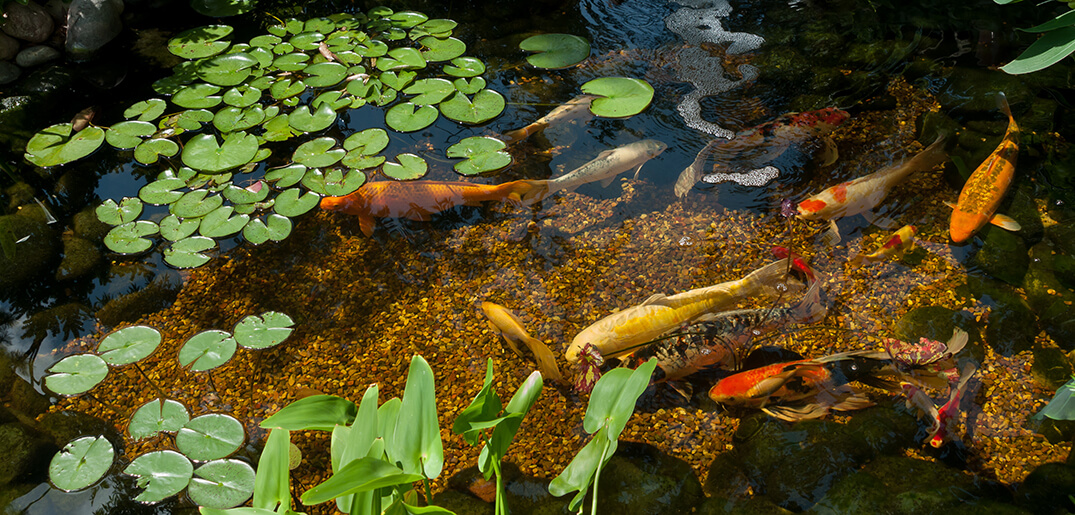Correctly stocking your Koi pond is a procedure that is delicate and should never be done haphazardly. The water will need to be cycled properly to ensure the environment is safe for the fish. The time needed for cycling is usually about four weeks but can be as long as 8 weeks. Below are some additional tips that will guide you.
Avoiding NPS
NPS, also known as New Pond Syndrome, is typically the very first problem new pond owners will encounter. City water tends to be rich in both chloramine and chlorine which means you need to employ a dechlorinator so that you can eliminate them. Koi which are placed in a recently constructed pond too quickly are more susceptible to disease. The reason for this is because rapidly stocking fish increases the ammonia levels and the filter may not be strong enough to break it down in time.
Ammonia Poisoning
Ammonia poisoning is a serious issue that can damage the kidney and gills of your koi. It also foments physiological imbalances which impair the growth of fish while compromising their ability to fight off disease. Aside from ammonia, another element that proper stocking will prevent is nitrites. Elevated nitrite levels can also result in fish poisoning since it compromises their ability to receive oxygen.
Ammonia, both in manmade and natural ponds, is the result of dead plants and animals which dissolve. It is exceptionally toxic, and therefore it is extremely important to test your water frequently to make sure it is safe. Check the pH of the water to ensure it is at proper levels, and there are also kits available that you allow testing for both nitrites as well as ammonia.
The temperature of your koi pond should be no lower than 60 degrees Fahrenheit. If you find that the pH levels are too high, then you’ll need to perform a partial change of the water using liquid that is both soft and acidic. Furthermore, inspect the pond for buffer sources which could be elevating the pH levels. If you notice that the pH is lower than it should be, add a bit of tap water or lime source such as crushed shells or limestone chipping to bring it back into balance.
How Much Water Do You Need For Each Koi?
For each koi you have in your pond, you should have between 100 and 200 gallons of water. Remember that these are large fish that need lots of space. This should be considered the minimum amount, as those looking to breed jumbo koi (specimens which are thirty inches or larger) will need about 1000 gallons per fish.
Choosing The Right Filtration System
Filtration systems are designed to provide your pond with helpful bacteria that will absorb fish waste, along with decomposed matter and food that is uneaten by the fish. By doing this, it prevents the matter from transforming into ammonia. When you install a new filter, whether it is a waterfall bio filter or external unit, it can take weeks for the helpful bacteria to develop, which is why the pond shouldn’t be stocked too quickly.


 Blog
Blog



